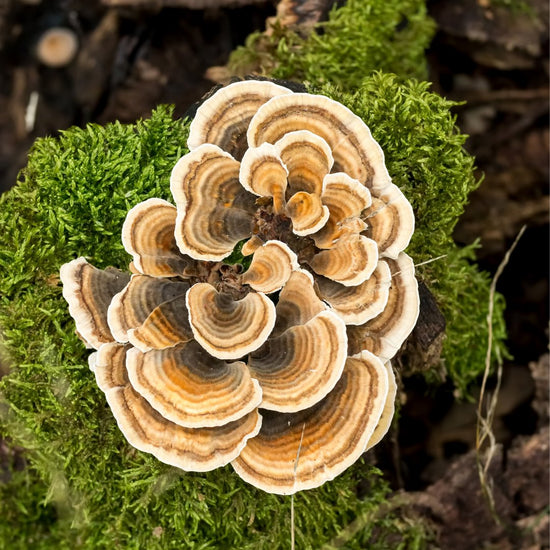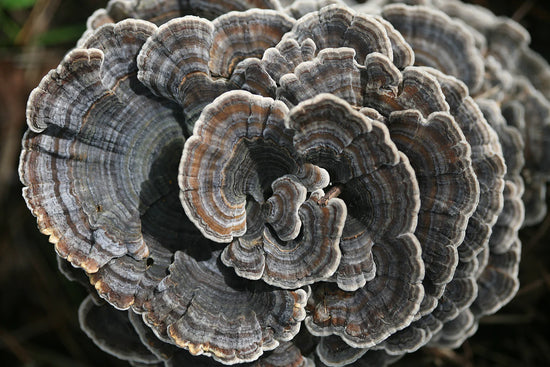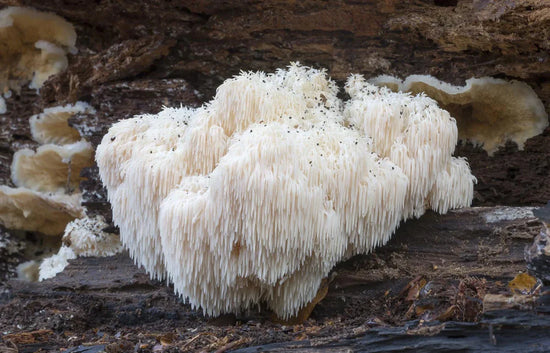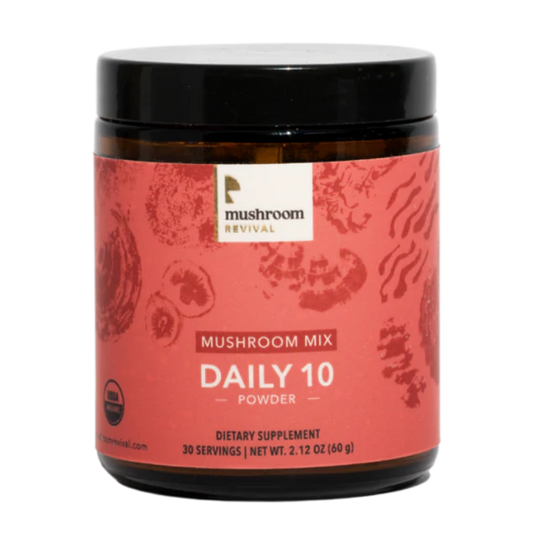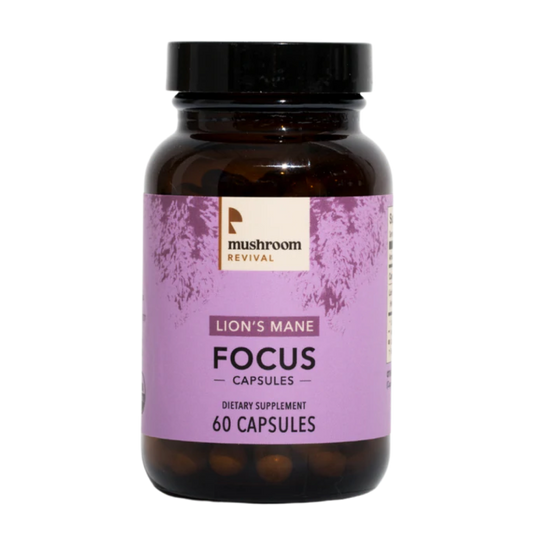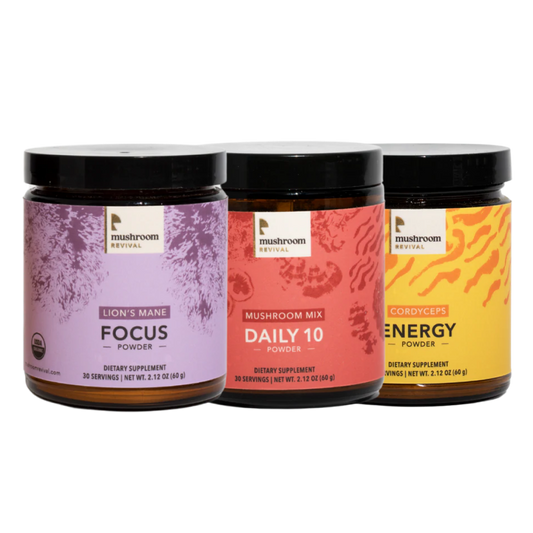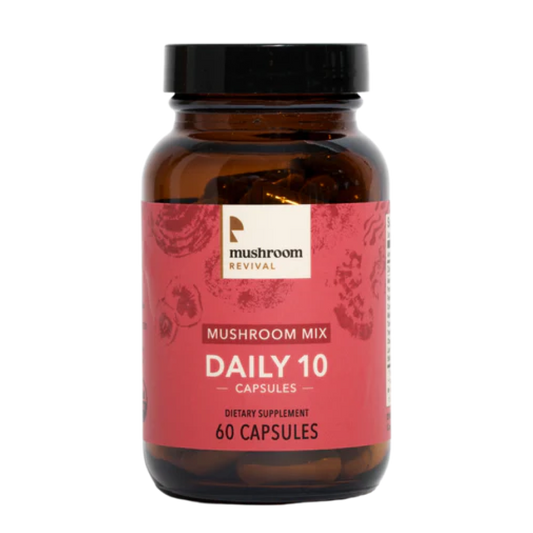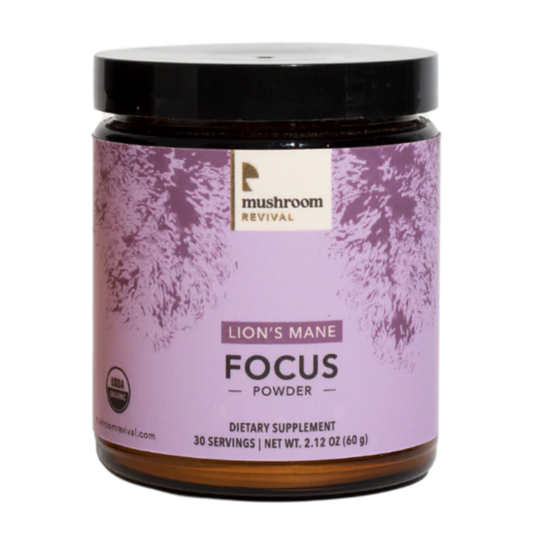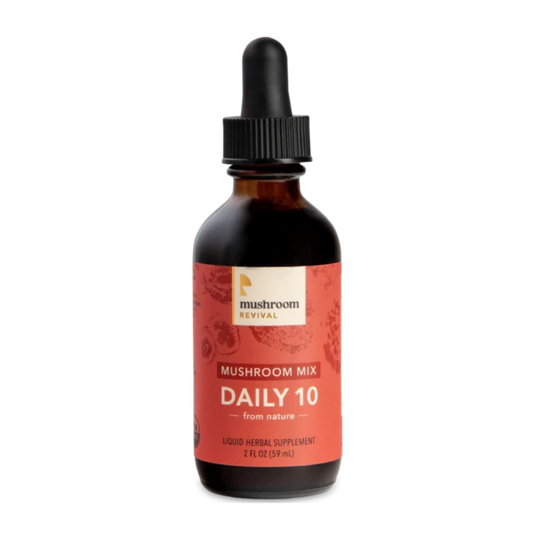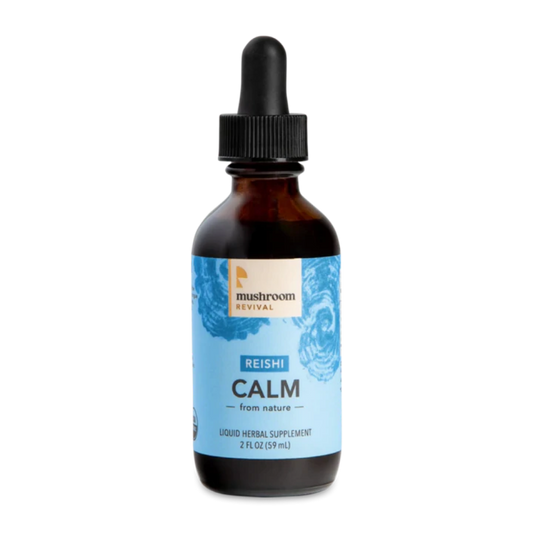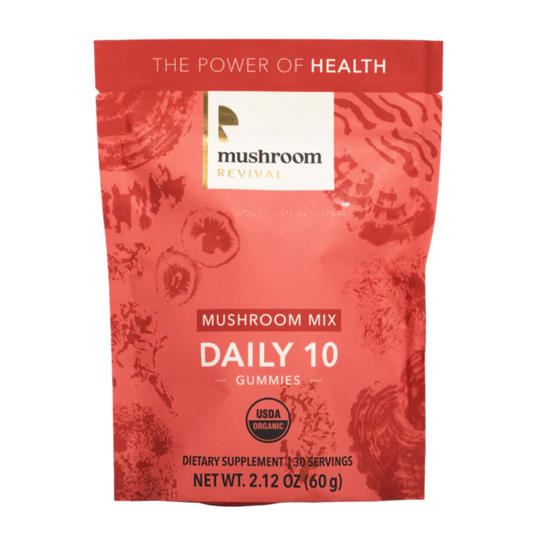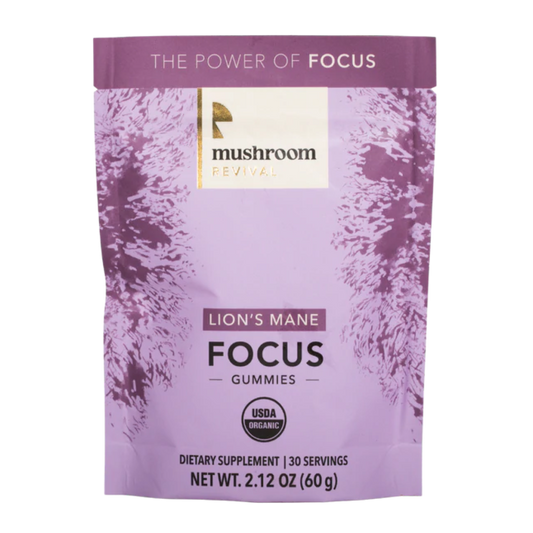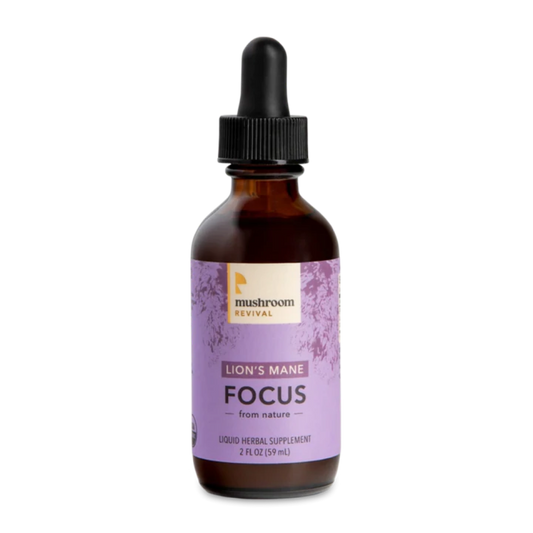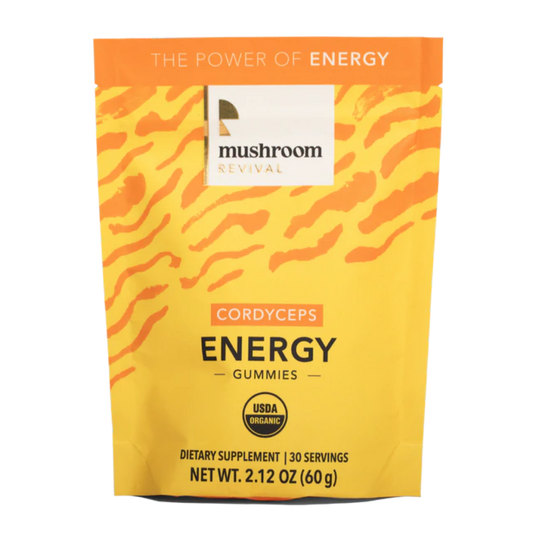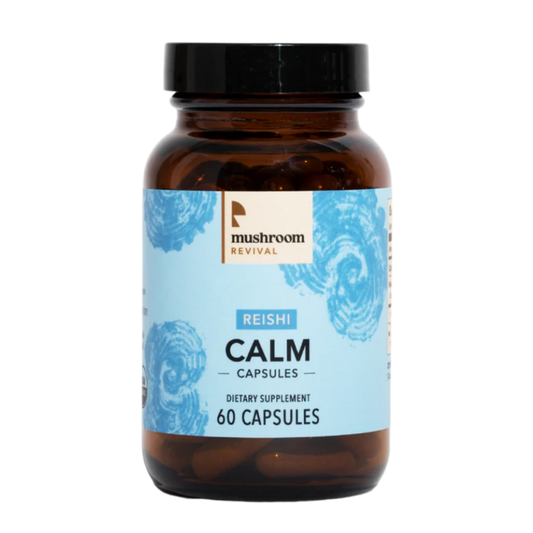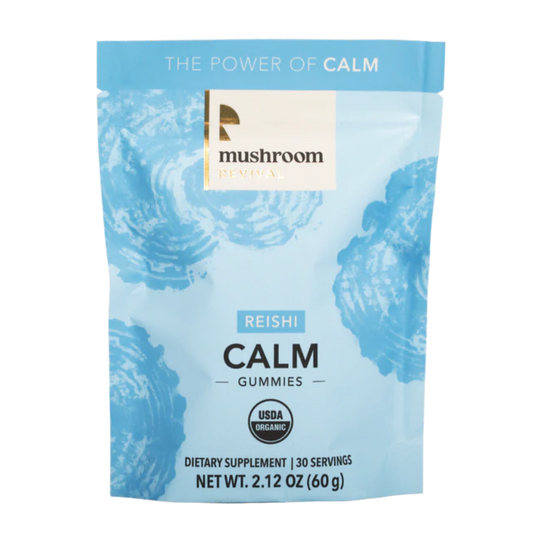Michael Beug: The Famous Mycology Professor
Podcast Topics
- Michael Beug’s pioneering work in mycology
- Being on the toxicology call list and working with doctors and hospitals on mushroom toxicity cases
- On mushroom identification and the importance of it
- His mycological curriculum and teaching history at Evergreen State College
- Research with his students, Paul Stamets, Jonathan Ott, and Jeremy Bigwood
- His books Ascomycete Fungi of North America A Mushroom Reference Guide and Mushrooms of Cascadia: An Illustrated Key as well as their picture keys
- Research on psychotropic, edible, and non-edible fungi
- Discovering new mushroom species
- Beug’s work in the chemistry field
- Michael Beug’s success in helping to ban the insecticide, DDT (Dichloro-Diphenyl-Trichloroethane)
- How his background in chemistry was used in the mycological field
- How fungi eat
- The lack of compassion in the country and how properly using psilocybin helps
The Famous Professor Michael Beug and His Scientific Work With Mushrooms
Image from Cascade Mycological Society
Today, we are joined by Michael Beug, a legendary professor and scientist from Evergreen State College. Beug mentored a handful of today’s great mycologists such as Paul Stamets, Jonathan Ott, and Jeremy Bigwood. With a Ph.D. in Organic Chemistry and a love for mushrooms, his expertise was and continues to be instrumental in the growth of mycology as a whole. After just publishing a field guide, Mushrooms of Cascadia: An Illustrated Key, we are blessed to have this opportunity to talk with him. Tune in for some insider info on the culture and science of mycology in the western world.
Beug Pioneered Mycological Curriculum at Evergreen State College
Image from evergreen
As a student-focused Liberal Arts College, Evergreen’s educational system allows students to chart their own education, so long as there are faculty that can guide them. Michael Beug was the mentor for three myco-curious individuals all of whom showed up in 1975 to become influential figures in mycology. They include Jeremy Bigwood, Paul Stamets, and Jonathan Ott. Beug’s expertise in biochemistry and generous dedication to those students made new research and discovery possible in mycology, especially with psychotropic fungi.
His Students: Jeremy Bigwood, Paul Stamets, and Jonathan Ott.
Beug’s students went to him at Evergreen State College with keen knowledge and interest in psychotropic plants. They had even written books on the subject. Jonathan Ott and Jeremy Bigwood wrote Teonanácatl: Hallucinogenic Mushrooms of North America. His second student Paul Stamets wrote Psilocybe Mushrooms and Their Allies. After their research at Evergreen, everyone continued to write several other books, including Beug. Moreover, the three introduced their professor to psilocybin mushrooms and together they researched for many years. This scientific work included looking at the chemistry of countless strains they found as well as using Schedule One, Two, Three, and Four Licenses.
Michael Beug’s New Mycology Book: Mushrooms of Cascadia: An Illustrated Key
Beug’s first book, Ascomycete Fungi of North America A Mushroom Reference Guide, contains his unique “key concept,” which better helps readers identify strains. For Michael, the sheer nonexistence of information in most North American regions is enough to warrant our attention. And in his most recent book, Mushrooms of Cascadia: An Illustrated Key, Beug helps us chip away at the misadventure with more expanded illustrations. The picture key is “the special thing [Beug brings] to both books [so] both beginners and professionals” can use it.
The importance of surveying and identifying fungal populations is important and there are many
reasons and perspectives on how and why it’s needed. For more information, check out the podcast show, “Kew's Fungarium: The World's Largest Collection of Fungi” to discover some of the reasons why collecting, studying, and preserving mushrooms is key. Also, stay tuned for future discussions on these efforts. But luckily, mycology isn’t the only scientific move Beug has made in the field.
How Beug Helped to Ban DDT and Save Wildlife
Unrelated to mycology (but just as awesome), Beug had a focus on the ecology and chemistry of pollution. He worked with ornithologists, bird scientists, and other researchers to quantify the impacts of newly applied chemicals in forests and animal populations. Before his team, no one had looked at DDT’s (Dichloro-Diphenyl-Trichloroethane) effects, which “is an insecticide used in agriculture” (5).
Beug and fellow researchers created monographs of wildlife before and during the use of DDT. They showed its destructiveness to the environment, which effectively got rid of it for good. The insecticide was banned in 1972 by the EPA. Further studies showed that exposure to the chemicals “developed liver tumors” in animals, so it has been “classified as a probable human carcinogen by U.S. and international authorities” (6).
Sadly, the effects of the residue of DDT on the environment, wildlife, and human health from historical uses of the insecticide are still unknown. However, on the brighter side, Beug and his peers were able to ban the use of the chemical in the country with their research findings. Before the banning, Beug witnessed the consequences of the pesticide on the fauna at Pelican Lake. There he never saw a pelican. However, just 15 years ago, in 2006, he went back and saw pelicans there! It was a restoration of one of the regional animals because of his protective work with his colleagues.
A Takeaway From the Podcast Show with Beug
In the end, Beug’s work does not stop with pioneering the research of psilocybin mushrooms. It does not stop with saving people's lives from mushroom toxicity. And it does not stop with banning DDT to protect the environment. His secondary findings within the realms of his research on psilocybin are pertinent to helping the world too. Beug states that he “see[s] an increasing lack of compassion in this country [and] psilocybin, properly used, almost always makes people way more compassionate.”
Want to know more? Tune in to our latest episode featuring this legendary professor.
Podcast Show Notes & Works Cited
- Beug’s 1st Book: Ascomycete Fungi of North America A Mushroom Reference Guide by Michael Beug and others. https://www.amazon.com/Ascomycete-Fungi-North-America-Reference/dp/0292754523
- Beug’s 2nd Book: Mushrooms of Cascadia: An Illustrated Key by Michael Beug. https://fungi.com/collections/identification-guides/products/mushrooms-of-cascadia
- Book: Teonanácatl: Hallucinogenic Mushrooms of North America by Jonathan Ott and Jeremy Bigwood. https://www.amazon.com/Teonan%C3%A1catl-Hallucinogenic-Mushrooms-North-America/dp/0914842293
- Book: Psilocybe Mushrooms and Their Allies by Paul Stamets. https://www.amazon.com/dp/0930180038?tag=mostrecommendedbooks-20&geniuslink=true
- Website: Mushrooms of Cascadia. https://www.mushroomsofcascadia.com/home
- Michael Beug’s LinkedIn: https://www.linkedin.com/in/mwbeug44/
- CDC: Dichlorodiphenyltrichloroethane (DDT). https://www.cdc.gov/biomonitoring/DDT_FactSheet.html
- https://www.epa.gov/ingredients-used-pesticide-products/ddt-brief-history-and-status
TRANSCRIPT
You're listening to the mushroom revival podcast. What is up mushroom family? This week's episode features an interview with the legendary professor at evergreen college, Michael buke, who mentored so many great mycologists such as Jonathan Ott, Paul Stamets and Jeremy bigwood, and really help pave the way for a future for myco illogical education. We discussed his history at evergreen studying psychrotrophic fungi, discovering new species, describing the chemistry and so much more.
Michael 0:48
I'm Michael bukh. And I got started identifying missions through our love of foraging and at the Evergreen State College. When it was brand new, and I was a brand new faculty members, students wanted to learn about mushrooms, nobody else on the faculty knew anything I knew little. And so I basically spent the last 45 years learning about mushrooms with the help of my students and others been quite independently. In addition to the working with the students, I'm on the Education Committee of the North American myco illogical society. I write articles for fungi magazine and much from the journal and I chair the toxicology committee for all of North America and track poisonings and deal with mushroom poisoning calls from all over the world.
Lera 1:38
I think you and tried quarter two that we know personally who are on the toxicology call list. Thanks for doing that work. Do you have a most memorable phone call?
Michael 1:48
Well, I almost never do it via phone calls. Almost all of my correspondence comes by email, Unless Unless it's an ER doctor calling me directly or, or a poison center calling me directly which does happen periodically. I don't know that any standout in particular, it's what I feel best about is when I can reassure reassure some panic parent that the the mushroom hanging half out of the mouth of their young toddler is a harmless mushroom. And the thing I dread the most is having to say, Oh my gosh, get to a doctor fast because that's a deadly species. And both happened. But mostly it's it's good news that it's a harmless mushroom.
Alex 2:35
And you've been teaching mushroom ID at evergreen college for last 32 years. Well, I
Michael 2:40
talked to her for 32 years. But that ended back in 1970. In 2004. I'm sorry, I've been I formally retired in 2001. But I kept teaching for three more years to total up to 32. And Congrats. I'm still active evergreen students when there's an evergreen mushroom program come down here where I live about three and a half hours from campus. But they come to me and I take them out mushroom hunting. So I'm still very involved with students. And I've just finished a brand new book mushrooms of Cascadia. It's been out for three weeks. And that covers over 900 species of mushrooms. In our area,
Alex 3:22
what was it like? You know, did you have a negative response from evergreen college teaching students ID and you know all about mycology and mushrooms, was it very supportive of your work? How was the general response over the years?
Michael 3:38
Well, at Evergreen State College is is a very, very different college from any other every other college in the nation. And the faculty have extreme independence, we can basically do whatever we want. We team teach, primarily, we rarely teach, taught, I rarely taught as solo fashion. So your question isn't easy for me to answer because nobody was saying, Hey, don't do that, or you can't do that. If I wanted to do it, I did it. And I became incredibly popular and that's why well, they they still try and get me back to do more teaching. But I'm retired now and I enjoy living in the country. Far for many cities.
Alex 4:28
It's funny, I went to Hampshire College, which is kind of the East Coast version of evergreen and you know, it I got denied from growing mushrooms in the greenhouse and you know, there was a lot of resistance from a lot of the faculty a lot of the faculty were very involved with mushrooms and supportive. My research there but a lot of the faculty were against it and had a lot of myco phobia. So you know, I even in the most liberal liberal arts schools there, I've come across some, you know, myco phobia. So I'm sure it wasn't all easy, but compared to, you know, most colleges and I'm sure it's a bit easier.
Michael 5:14
Well, I, I just had total support, and nobody ever questioned anything I was doing and including growing huge quantities of philosophy cubensis in the
Lera 5:24
lab. Were you doing that? Because the three students that came to you wanting to study psychotropic mushrooms?
Michael 5:32
Well, actually it in a way, it's the it wasn't my idea at all. When I had never even heard of philosophy mushrooms, the students showed up. One of them had already written one of my three early students that got me started, had already written a book on mushroom cultivation, focusing on growing philosophy cubensis, the second student, that was Jeremy bigwood, the second student was Paul Stamets who came out of the woods, where he'd been working as a lager. But he was very interested in pursuing studies of, of the philosophy mushrooms, and then the third student, Jonathan art, and they all showed up in 1975. had written a number of books already on psychotropic plants. And so the students introduced me to all of this and got me started, it wasn't something I did. Because I was interested, I got very fascinated, and we worked together. I was Paul's only professor for his entire four years of college, his only formal professor, so he got all of his academic credit for me. And we just research psilocybin mushrooms and look at the chemistry of them to see which mushrooms had the chemicals and which didn't and how much was in them. And that's my I'm a trained chemist, not a trained mycologist. And so I put my chemistry to practice on researching psilocybin in wild mushrooms of the Pacific Northwest.
Alex 7:02
Did you have to get a permit at this time? Because this was post war on drugs at this time, correct?
Michael 7:10
Oh, yeah, I had from I had scheduled 123 and four licenses, so I could work with any drugs, I had my own prescription pads, so I could get prescriptions for things that we needed for research. And the federal government provided me pure standards, and psilocybin and ciloxan to support my research.
Alex 7:36
And was that a hard process? Or is that easy at the time, just because it was relatively new? It
Michael 7:45
my student, Jeremy bigwood, knew exactly what to do. He knew the people in government to contact he set it all up for me and guided me through the process. It was very quick, very easy. Yeah, it was an annual fee to maintain those licenses. But yeah, it was just a few $100. And that that was it. But it was because I was an academic and doing research and right. I had a student with the right connections.
Alex 8:14
Right. Right. And how long do you have those permits for?
Michael 8:17
Well, I kept the permits until 2004. Until you retired. Great.
Lera 8:24
Seems like the mycology department at evergreen was non hierarchical. It's just like a conglomeration of interested parties. They're all carrying their own specialty.
Michael 8:36
Yeah, the mycology department at evergreen was me. And I only formally got to teach it as a full time program three times in my 32 years. And then I would occasionally teach you a noncredit evening class in mushroom identification. But I was doing the research on the side and my research into mushrooms has been constant, both on the psychotropic mushrooms, the ones that contain psilocybin and selasa. But mushrooms in general just learning to identify them and and understand which ones were dangerous and which ones who are safe to eat.
Lera 9:14
Can you speak to why these people were attracted to evergreen? I mean, one thing I know is that especially back in those days, there really wasn't a university offering formal mycology training or even in formal for that matter. So what was it about evergreen that Jeremy big word and Jonathan ah and Paul Stamets were interested in
Michael 9:36
well, evergreen has no distribution requirements, no specific course requirements. If you can find a faculty member who approves of what you want to do academically, you can do it. And it's as simple as that. There's no overall committee that says no, you can't offer this program or this course. You know, I spent money Most of my time teaching either general chemistry, organic chemistry, organic farming, sustainable energy, but sometimes even engineering thermodynamics. And but mushrooms was always there on the side always an activity I was engaged in as part of what I was doing.
Alex 10:22
I actually almost went to evergreen, and I changed my mind last minute because it was it was too cloudy for me. And I knew, without that much sun sunshine, I would probably get sad, pretty bad. So I went to the east coast, where we still had a brutal winter. But you know, I think, a couple more sunny days, but, you know, I was still able to create my own major and and, you know, basically study whatever I wanted. And, you know, I'm curious, though, going back to studying philosophy, and, you know, it seems like, was it just those three students and starting in 1975? Or, since you had those permits for 29 years or almost 30 years? Were there other students after them that were interested in in the same, you know, studying of these the psychoactive mushrooms?
Michael 11:20
No, I'm, I mean, there's always students interested in the mushrooms I would notice. Like one day I did a mushroom walk down at the college evergreen, at the Evergreen college organic farm. And as I was walking out of the building, and I looked along the front of the of the building we were in, there was probably 500, Salafi sign essence mushrooms growing there in the underbrush. And I I took no note of them, I just let the students by on past them. And we went into the woods, we did our mushroom hunt, we we laid the mushrooms out on the table and identified them. There wasn't one psilocybin mushroom on the table. But there also wasn't one left outside the window of the building anymore either. The students maintained interest but right, my only formal work with these mushrooms was with Paul Stamets and and Jeremy and Jeremy bigwood. And Jonathan was specializing in aminated muscaria, not in this philosophies.
Alex 12:22
Interesting. And did you make new discoveries with these students throughout the six years that you work with them any anything new to science, or to psilocybin mushrooms in containing mushrooms in general?
Michael 12:34
Well, first of all, we publish several new species of Salafi that we found in the northwest that had never been identified before. And, and secondly, we've figured out exactly which mushrooms had psilocybin, how much they had, we study how consistent Li they produce them, like philosophy cubensis, from one culture to another, you can have a tenfold difference in the concentration of psilocybin philosophy. And so we investigated how that varied over time, and how it varied over the strain of philosophy cubensis you regrowing and then on the wild mushrooms, we would pick the same species in many different habitats, and tested its chemistry. And we found some mushrooms like philosophy sign essence, were consistently very powerful. Liberty caps about half as powerful but very, very consistent in the amount. So it's that kind of work. But we also found that psilocybin was present in species that are generally considered edible, like a couple of gluteus species, and mushrooms that weren't eaten, because they were too bitter, there was a half a dozen gianopolous species that we found psilocybin in. So we were looking at a lot of different mushrooms to see which one have psilocybin and ciloxan. We were focusing on a blue staining reaction to see whether or not we wanted to test it. And we found that, you know, there's a number of different things that cause blue staining and mushrooms, it isn't always psilocybin and ciloxan. That was a good clue that this is a mushroom we wanted to look at. But also we found that if the mushrooms didn't have any ciloxan at all in them, and only had psilocybin, they didn't bruise blue. So we figured out eventually that the blue bruising was due to the presence of solar cell sun, which is the dephosphorylated psilocybin Have you been interested in?
Alex 14:33
You know, I'm, I'm sure entrepreneurs in the psilocybin space might have reached out to you for for help or guidance. It's it's a booming industry right now. And you know, we're we're finding new Salafi species all the time, especially, you know, we discovered less than 1% of all fungi. And I'm sure there's tons of species out there that contains you know, these psychoactive compounds are Are you interested in finding new species? Do you ever travel outside the Pacific Northwest to do forays and new discoveries?
Michael 15:08
Well, I used to travel all over the United States and Canada, hunting mushrooms in many different habitats and environments. I wasn't specifically looking for philosophy mushrooms, I was just looking for interesting mushrooms to identify and, and learn. Learn more about
Lera 15:28
these days, you are contributing to your books. And I would love for you to just talk about the two books you've written. The one is for Cascadia and the ASCO my seats and any other projects you might have on the horizon.
Michael 15:45
Well, the big project on the horizon for me is to continue to update mushrooms of Cascadia and illustrated key, I've set up a website to go with the book. So as I discover new species, I can post them on the website. And then as we learn more about the DNA of mushrooms, and that's the main thing I'm engaged in now is finding species that we thought we knew what they were making sure we that the DNA has been run on them, and that they are actually what we thought they were because many of our mushrooms in the West have names based on mushrooms on the East Coast of the United States, or mushrooms in Europe. And when we actually do the DNA, we find out that they're significantly different. So my current project is really focused on learning all the different mushrooms of the Northwest and getting names on as many as possible. With the broader idea that this is a good way to save the forest. If I get people interested in the woods, people are going to protect it and protect the resource. Absolutely.
Alex 16:56
Can you give us a brief synopsis of the first book that asked them I see fungi of North America, it's almost 500 pages over close to 900 photos of amazing fungi? What was the journey of writing this book? What what prompted it? How long did it take any details you have on on this specific book?
Michael 17:18
Well for for ascomycete fungi of North America. I hadn't even dreamed of writing such a book because I'm not an ESCO, my seat specialist. There were three other authors, one of whom dropped out before the book project was finished. And I figured they were going to do the main writing and I was just going to help out. That isn't how it turned out. And what I wound up doing in creating the book was writing to all the leading mycologist in the US and Canada and asking them what pictures they would would be willing to share and what they thought were the most interesting ascomycetes out there. And so I really call ascomycete fungi of North America, my Symphony, and I was conducting the symphony, but many many players contributed to it. And in general, I got the world expert on any given genus to review that their own part of the books of the book was a as accurate as possible, be included as many of the important species. And it was there that I developed the first kind of picture key, because the contract for the book limited me to 320 pictures. That's what I was allowed. And yet I had 500 species of mushrooms I wanted in the book. So by creating a picture key that had often 30 different mushrooms on a given page. And then I asked my editors is how many photos Does this count up so they counted each page as one photo. So I could stay within my contract limit of 300 images, and yet have hundreds of different species and hundreds of different images. And then for this next book, the mushrooms of Cascadia, I just expanded the key concept. So the entire book becomes a giant key where the ASCO mice eat fungi of North America. A fourth of the book is the key. And the other three fourths are the mushroom descriptions that you find in any typical mushroom book. Now most mushroom books have very little in the way of keys and sometimes no keys at all. And that's really my specialty and that's the special thing I'm bringing to both books is that picture key and both beginners and professionals. After I published ASCO, my seat fungi of North America, we're just thrilled by the picture key and how easy it may be My identification for them. And that's why I was looking for a way to bring that further. My new book, mushrooms of Cascadia is entirely my effort, a solo effort. And I went with a publisher that would let me design the book exactly the way I wanted it. And see, I had no control over the design on the very first book is a very, very beautiful book. But I wanted to pack a lot of information in a small space. So people would actually take the book into the field and use it in the field to identify mushrooms, and not be a four pound bamas. Like my ascomycete fungi from North America, which is really a kit, a coffee table book. So So I've produced first a coffee table book, and then a true genuine Field Guide, that's going to be really easy to use in the field. And be easy both for beginners, but desirable for professionals, because of the range of information. Many species that I've named, based on things that I found myself that haven't appeared in any field guide ever before.
Lera 21:10
Thanks for doing that. Excited to for the Western world to keep up. I kind of want to rewind, and I'm imagining you as a biochemist at evergreen. How did this background because you have a doctorate in this, how did this serve you in the world of mycology? Can you like can you give us specific examples of you in the lab and having you you did talk about the blue bruising and psilocybin but what else? Were you able to elevate in the myco? logical department?
Michael 21:42
Hmm. My knowledge of chemistry was really important in being able to do the psilocybin and ciloxan analysis that I did do. And, and my knowledge of chemistry, in general, is what led the North America myco illogical association to ask me to join the toxicology committee, because I can both identify wild mushrooms. And I understand the chemistry and I understand the biochemical action of all the different toxins that are contained in mushrooms. And therefore, I could use my biochemical knowledge to assist doctors and hospitals and emergency rooms, in figuring out not only what mushroom was consumed, but what kind of treatments are going to make the most sense, given my knowledge of the chemistry. My specific doctoral work was in enzyme kinetics. And it's always almost always enzymes that are being affected by these chemicals that are adjusted in mushrooms that cause mushroom poisonings. And as a sidelight, I had done significant analysis on the effects of DDT on forest ecosystems. The two years prior to the arrival of Jonathan Ott and Apollo, Paul Stamets and Jeremy bigwood, I worked with another an ornithologist on a program called the ecology and chemistry of pollution, where we looked at the effect of heavy metals in your minds and near smelters on surrounding vegetation, plants and animals. We looked at the effects of PCBs on marine mammals and marine ecosystems, we looked at the effects of fluoride from aluminum smelters. And most importantly, we studied the effects of DDT on a forest ecosystem, something that had never been done before. And after, in this program was eight quarters long, full time for some students who stayed in for the full eight quarters. And it resulted in the publication of many different papers. But the most important one was a wildlife monograph on the effects of DDT on a forest ecosystem. And that monograph led to the end of the use of DDT in North America. It was central in finally getting it banned. And so that's how I have I have applied my chemistry and my biochemistry over the years, it hasn't always been related to mushrooms. But it's always been related to solving environmental problems.
Lera 24:17
That's wonderful to hear about your progress with DDT.
Michael 24:20
It's my greatest pride. I live along the Columbia River, and now I see eagles and now I see ospreay they were personally gone. I go back to Minnesota where our family farm was and go to Pelican lake and Pelican Rapids and I had never seen a pelican. And when I returned 15 years ago, there were pelicans all over again. And that's all because DDT got banned. That's actually my most important contribution as far as I'm concerned to the world, but it's also one of the least known. I'm much better known for what I do with mushrooms.
Lera 24:56
Yeah, I mean, I'd have to agree that the consequences and the benefits of that workers super Stark. And I'm pleased that it seemed to have such a quick recovery or, you know, at least quick enough that you could notice these animals coming back and show there's a lot more remediation to be done. But so if you will, I would love to ask you some questions about metabolites, because I don't think we've covered this on the podcast much and Okay, if you know your biochemistry, fungi have primary metabolites and secondary metabolites? Could you just give us a kind of one on one on, you know, fungi are heterotrophs they eat things, right? So they're spitting out enzymes? How would you describe the way that fungi eat?
Michael 25:43
Or the way that fungi eat themselves, it's really quite fascinating compared to everything else. And most things have a stomach, they take the food into the stomach, we're talking about animals now and digest the food. They're in the stomach. And fungi, by the way, are much more closely related to animals than they are to plants. But fungi instead, send out enzymes chemicals into the environment that digests the food in the environment, and then bring it in to the mushrooms. And that's also what makes them such valuable partners mycorrhizal partners with a huge range of plants. Because the mushroom mycelium can spread much farther than the roots of the plant and bring in water and break down and mineralized rock, they can dissolve rock and get the minerals from the rock. And then they can get the organic matter from the trees and the and the shrubs and the and the grass and the grasses and other things that are mycorrhizal associated with the fungi. So it's really quite fascinating to me in in how they operate in the environment. And they're very, very central role in the health of the forest. Even in the health of a prairie ecosystem. The fungi are absolutely critical. flowering plants evolved after fungi had come ashore from the ocean, and are the whole world as we see, it depends on this ability of fungi to liberate minerals and interact with plants to the mutual benefit of the plant and the mushroom.
Lera 27:36
Yeah. Credit, I don't know if you've studied this or attempted to or witnessed it. But I'm trying to imagine zooming down and seeing filament. And, okay, it's got to secrete some enzymes, because it's that's this that's some delicious log to digest. Where in the cell wall is that being secreted as a uniform, you know, all the surface of the cell, Wallace accreting it? Or does it tend to be mostly at the hyphal tips, or just wherever there's eligible substrates? And then how does the fungi know when it's ready to suck that nutrients back up? If it's once it's degraded? I mean, are there just pores open? And you know, once that cellulose or whatever it is, is broken down enough it will fall through? Or is there some sort of chemical signal that tells them, hey, this has been digested, you can go ahead and open up and suck up this sugar or whatever it is the day had digested? And then where does it go? Does it just float uniformly throughout the cytoplasm? I'm just trying to picture the metabolism here.
Michael 28:47
Well, first of all, the fungal hyphae grow, grow towards any potential, they can send some potential site where they can get some nutrition, and they grow, grow towards it actively. So they actively move through the soil and reach out. And they follow chemical signals. So if they're going in one direction, and the and the signal is getting weaker, because the concentration of that chemical is going lower, they reorient to where the maximum concentration signal is coming from. And I'm pretty sure almost all of the absorption is through the tips. But I don't know whether that's been researched or not. And and then the fungi also interact with the roots of plants. And they can form either a surface network, or they can actually go into the root cells of the plant and form what's called an arbuscular. And so there's various kinds of mycorrhiza that can form and then the interchange of nutrients where they pick up the sugars and deliver the water and the minerals is happening on the roots of the tree on the roots of the herb or whatever is associated with that particular fungus.
Lera 30:09
Thank you. Since you have seen so much of the world of mycology develop I mean, you mentored some amazing researchers in the field. And you you've seen it all the way up to 2021. What do you think is the trajectory of mycology? And what do you hope to see? And as far as research goes, I know that you definitely want to get the DNA sequenced. But is there anything else in the whole scheme of mycology that you would love to see?
Michael 30:35
Well, there's a major national effort that's gone, is to create a myco floor up for all of North America. You know, we, we have a fairly good idea of the plants, there's still many plants to be discovered, we have a very good idea of the birds. But we don't have a good idea at all of what fungi are there. In a number of years ago, I took 80 soil samples 40, from oak forests, and 40 from Ponderosa forests, and sent them to Europe for DNA analysis, just to see, you know, how those two forest ecosystems varied. And to see what what's fun, hey, we're there, because we can really only detect a fungus when it fruits. Well, what we found is there were literally 1000s and 1000s of different species of fungi in both habitats. And the researchers in Europe, to whom I had sent the sample execute was Finland. They just threw up their hands and said, there's just too many unknowns, this, this is just overwhelmingly complicated. So there's just a massive amount of study that can be done just about anything that tweaks your interest regarding fungi, is under researched. And even common mushrooms like the meadow mushroom, which we've all at least in the northwest, known as Agaricus Camp pastorates. Turns out nobody had ever analyzed the DNA of it. And so I collected it last year, and sent it off for DNA analysis. I haven't seen the analysis yet, but almost undoubtedly, it's gonna be a something other than Agaricus capacitors. I know, I don't think we have that. And here's a very, very common very, very popular mushroom that's in every single mushroom book out there. And yet, we don't know nearly enough about it. Well imagine the more obscure ones. And we're just now discovering that people eat who eat mushrooms in their diet, at least three times a week are healthier than people that don't. And it doesn't seem to matter whether they're focusing on quote unquote, medicinal mushrooms or not. They just need mushrooms.
Lera 32:52
This is one thing I sort of love and hate about the psychological world. Because every day I work in a lab too. And I'm trying to learn more and more about fungi. And I was just emailing my colleges this morning about some some things I saw under the microscope. And it's just like I hit a wall. Almost every time I asked a new question, right? Yeah, it's cool, because it feels like what we're doing is important. And it's going to eventually compound. But it also does have this frustrating element where my ambitions are larger than the resources that are out there. So it's Yeah, it's fun, but it's daunting. And I have to thank you as a individual for a lot of this work for mycology as a whole and being there for students who have come through evergreen, and now evergreen is kind of known as this one school to go to for mycology, you know? So it's, it's great that you've done so much for that world. Not to mention your work with DDT. Do you want to tell us your favorite mushroom or your favorite like taxonomic name, but I thought that would be a fun thing to ask.
Michael 34:03
Well, my favorite mushroom for eating is clearly a mushroom known as lion's mane. hericium erinaceus it's a very meaty mushroom use you you slice it like you were slicing a roast and or maybe making ham slices for breakfast. You saute it on both sides. And it It tastes very, very much like lobster when you when it's found in the wild. Now interestingly, when you cultivate it, it's got a very nice texture, and I love using it in cooking, but it doesn't have that delightful wild lobster flavor that I get out of the wild mushrooms. So Lion's Mane is my favorite in terms of its flavor, but I'm now a daily micro doser so I microdose with psilocybin and take Lion's Mane daily.
Lera 34:57
That's That's wonderful. Yeah, I've experimented with a bit of that myself. And it's great that we live in the 21st century. And we have this knowledge now. And I am so excited to see what we learn and 10 years and 10 years after that, etc.
Michael 35:12
Oregon has just legalized the use of psilocybin mushrooms in controlled settings. And even you don't even have to show that you need them because of PTSD, which is really good at curing or because of anxiety issues or in dealing with the concerns about drug abuse, alcohol abuse, spousal abuse, psilocybin is an absolutely amazing compound. And Oregon has had the foresight to make it not legal to possess and use on the street, but accessible to anyone who will do it in a supervised clinical setting. And it'll take about a year or two before those things are set up. But I'm really excited about the prospect, eager to see laws, like Oregon's laws spread to many, many other states, because I think it's a way out of the opioid crisis. And it's also a way out of the, what I see is an increasing lack of compassion in this country. psilocybin, properly used, almost always makes people way more compassionate. And that's a has a lot to do with my fascination with these mushrooms and by continued research with them.
Lera 36:38
Likewise, thank you for that, Michael. It was so wonderful to chat with you and get to know your history and the mycology scene and all the things you've been up to. Big thanks to Michael Buick for spending time with us for banning DDT in North America and having such an influential role on what mycology in the West is today. And now it's time to share some gratitude for our listeners by reading a review for the week. This one is from sharoni super easy and interesting. Listen, first off I want to say thank you I am a small scale mushroom farmer working on a bigger scale facility that should be up and running this upcoming spring. Like I said, this is a super easy listen with a lot of very interesting content. Love that you are spreading the mush love and may the spores be with you.
Alex 37:26
sharone it brings us so much joy to hear so many mushroom enthusiasts from all around the world you know quitting their job and starting mushroom frontiers in the space where whether it be cultivation education or just a general love and lore for mushrooms. So much love for you. And thank you for farming more mushrooms and tuning into our nerdy program all about mushrooms and fungi. May your farm be bountiful and continue to bring joy to all it reaches. If you like what you here and want to support the show, you can do so by visiting our website mushroom revival, calm and purchasing any of our functional mushroom meat products for supporting energy focus your immune system, your body's natural defense against occasional stress and fatigue. and so much more. We have so many goodies that are on our site and are coming in the upcoming months we've we're working on so many fun things. So we have a discount code called pod treat all uppercase letters, p o d t r e a t for a special and surprise discount on your entire order.
Lera 38:39
And you can also support us by rating and reviewing which can get you featured on the show with our review of the week. Go ahead, write one. Get creative with it. Do you want to hear Alex try and pronounce a complicated Latin binomial? Do you have a good mushroom joke? Lay it on us guys.
Alex 38:56
We want to hear it and we couldn't do this without the support from our mushroom community. We love every single one of you tuning in and trimming in it. It's a beautiful symbiosis between the people and the mushrooms and fungi. So as always, much love and spores be with you.







